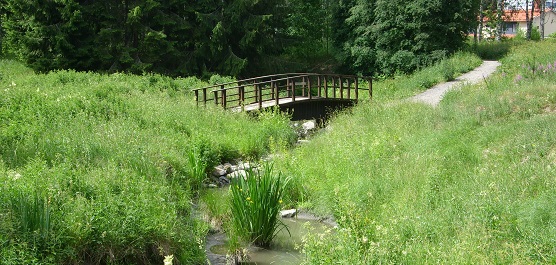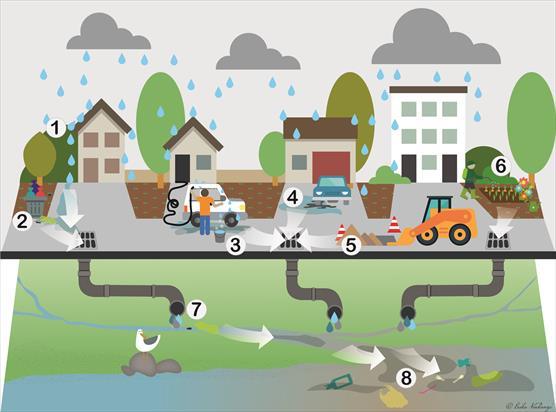The objective of HEAWATER is to verify and implement technological solutions that help to reduce pollution loads from/to small urban rivers in Tallinn (EE), Turku (FI) and Söderhamn (SE). The project will identify the best solutions for different problems, and enable decision-makers to foster the implementation of effective solutions. Implemented solutions will also help to raise awareness of the local population about the impact of human activities. The joint review and implementation of solutions by different countries with varying public awareness of urban environmental problems, ability and willingness of citizens to pay for urban ecosystem services, and different environmental problems, ensures that the set of pilot investments represents a range of solutions that are applicable in the entire BSR.

Urban stream in Turku © Kuva: Sari Väisänen, SYKE
Implemented methods will help to restore water quality (WQ) and biota of the rivers and reduce pollution to waters. The benefits of restoration will be estimated by costs-benefit analysis. Project results will be combined in a decision support tool (DST) to support decision making of coastal BSR municipalities.
The overall objective of HEAWATER is to achieve healthier WQ in urban small rivers of the BS catchment by restoration of water bodies and preventing the inflow of nutrients and hazardous substances, including litter, from watersheds. The decision support tool will combine different technical solutions for restoration of small urban water bodies. Another important way to reach the target of better WQ is to raise environmental awareness of citizens (Tallinn, Turku, Söderhamn) when making their everyday decisions that might affect nearby water bodies.
The project is led by the City of Tallinn. In addition to the project partners the project will closely collaborate also e.g. with John Nurminen Foundation and the City of Turku.
Contact person: Ljudmila Vesikko, Finnish Environment Institute SYKE, phone: +358 295 251 737, e-mail: first
name.last name@ymparisto.fi
Storm water influences city brooks’ water condition
The condition of brooks in the city area is largely affected by how the city handles its storm water. Storm water is, for example, rain water and meltwater from paved ground surfaces and building roofs that is not absorbed into the soil. Typically, storm water is collected in street run-off drains, from which the storm water ends up untreated in city brooks, rivers or the sea. Storm water from population centres, traffic, commerce and industry contain a variety of hazardous substances, which load and eutrophicate watercourses. As cities become more densely populated, the percentage of paved and covered surface area further increases. In addition to this, winter precipitation and heavy summer rains are expected to increase with climate change. This means an increase in storm water and the flooding and water quality problems that come with it.

Birth of storm waters and how we can influence on their quality. © Picture: SYKE
1. Metals and other hazardous substances from building roofs are released into run-off water
2. Litter from waste receptacles may fall into run-off water and be carried along with it
3. Car washing soaps, among other things, run untreated from residential yards into the watercourse and can be hazardous to living organisms
4. Oil or other substances can leak from poorly maintained vehicles into run-off water
5. Soil from construction work is often carried away by run-off water
6. Pesticides and excess nutrients are easily carried by run-off water into watercourses
7. Run-off water from drainage pipes usually end up untreated in brooks and rivers
8. Litter and hazardous substances are also carried by brooks and rivers into lakes and the sea